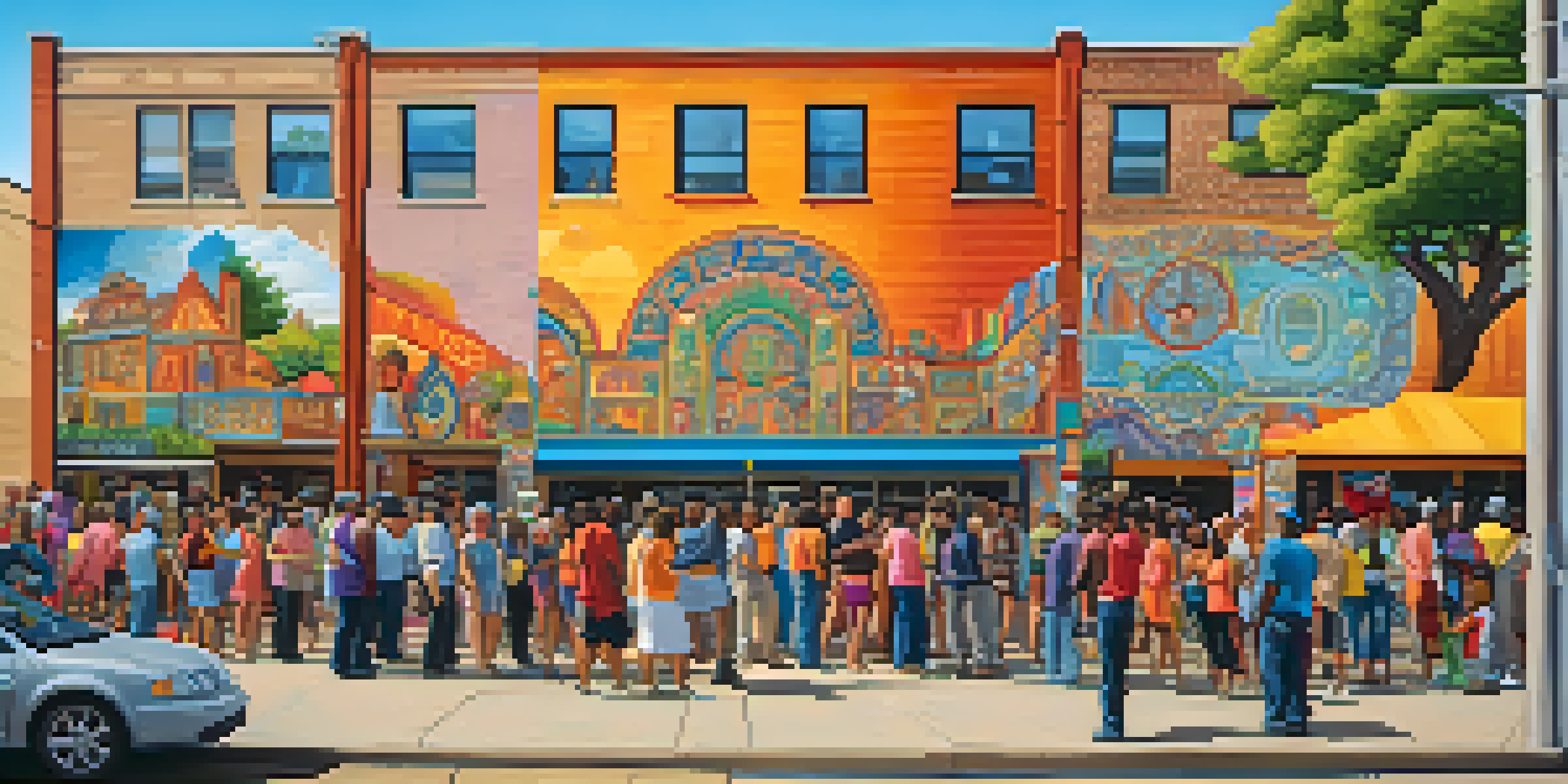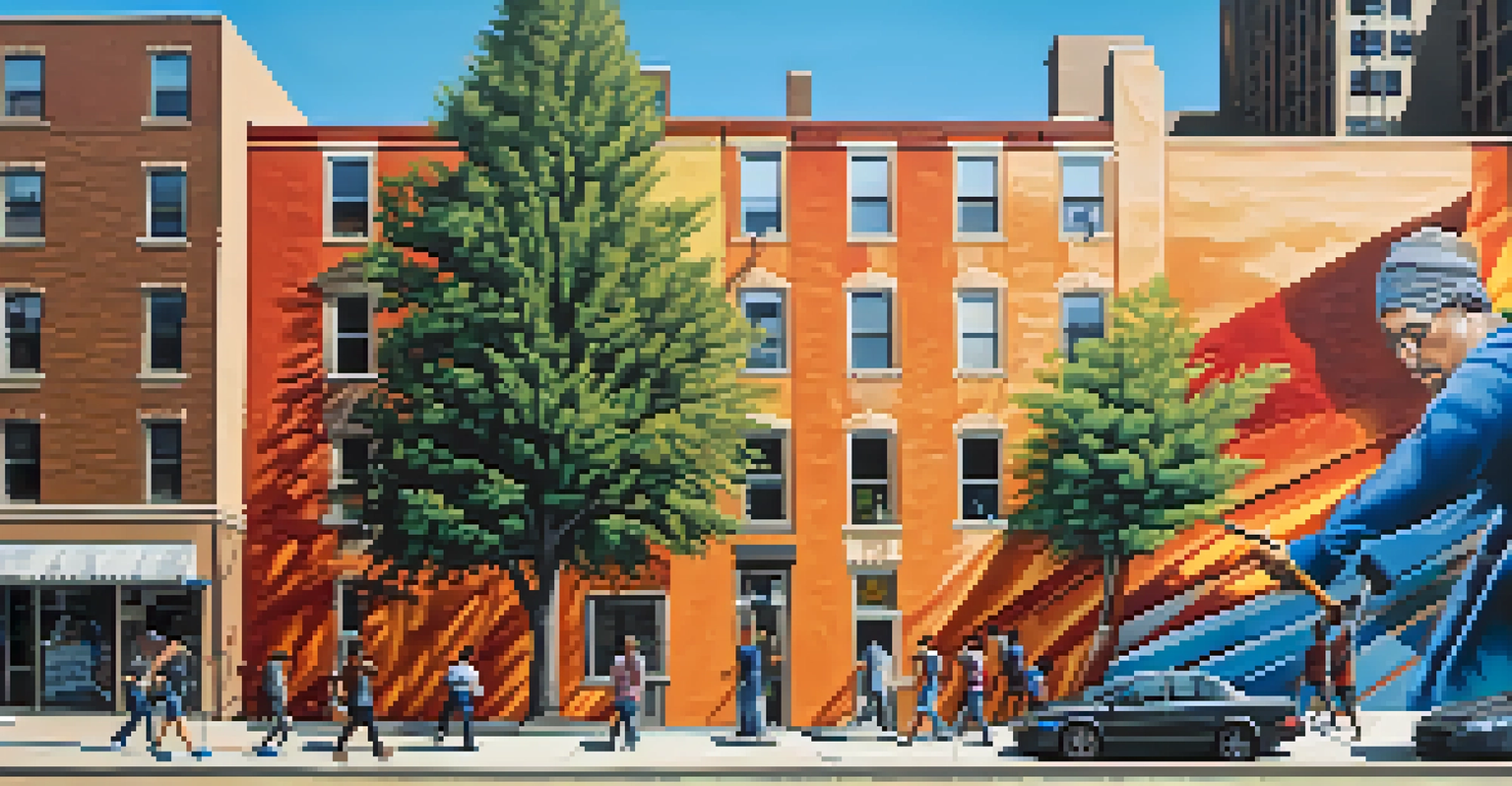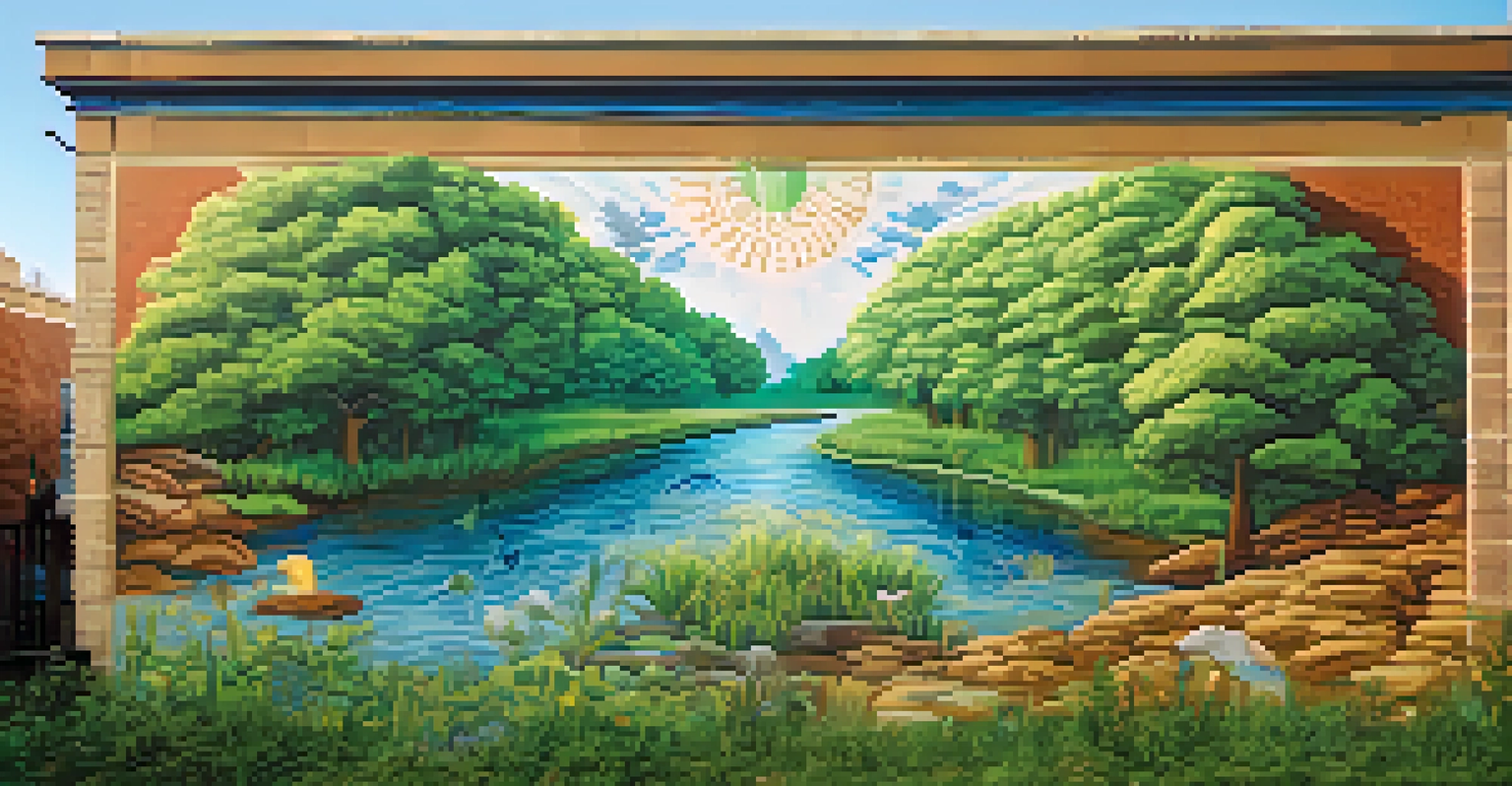The Evolution of Minneapolis Street Art: A Visual History

The Roots of Street Art in Minneapolis
Street art in Minneapolis has deep roots that trace back to the 1980s, when graffiti began to emerge as a form of urban expression. Artists took to the walls with spray cans, using their talents to convey messages, tell stories, and reclaim public spaces. This period marked a significant shift, as art moved from galleries to the streets, challenging traditional notions of where art belongs.
Art is not what you see, but what you make others see.
During this time, the city became a canvas for local artists who infused their work with cultural references and social commentary. The vibrant colors and bold styles attracted the attention of the community, sparking conversations about identity and belonging. This grassroots movement laid the foundation for what would evolve into a rich tapestry of artistic expression throughout the city.
As graffiti gained popularity, it also drew scrutiny and controversy. While some viewed it as vandalism, others recognized its potential to beautify neglected areas and foster community pride. This dichotomy set the stage for the evolution of street art in Minneapolis, leading to a greater acceptance and appreciation of urban art forms.
The Rise of Murals and Public Art Projects
In the early 2000s, the street art scene in Minneapolis began to transform with the rise of large-scale murals. Artists collaborated with local organizations and businesses to create visually stunning pieces that celebrated the city's culture and history. These murals became landmarks, drawing both locals and tourists who wanted to experience the vibrant art scene firsthand.

Public art projects, such as the annual 'Art-A-Whirl' festival, further propelled this movement, allowing artists to showcase their work in a more structured environment. This event not only highlighted the talent of local artists but also fostered a sense of community engagement. People began to see murals as an essential part of Minneapolis' identity, rather than mere graffiti.
Street Art's Rich Cultural Roots
Minneapolis street art has evolved since the 1980s, transforming urban spaces into vibrant canvases that reflect community identity.
The shift towards murals also allowed for greater artistic diversity, as artists from various backgrounds brought their unique styles and perspectives to public spaces. This inclusivity enriched the city's artistic landscape, reflecting the diverse voices of its residents and making street art an integral part of Minneapolis' cultural narrative.
Street Art as a Tool for Social Change
In recent years, street art in Minneapolis has increasingly been used as a medium for social change and activism. Artists have taken to the streets to address pressing issues such as racial justice, environmental concerns, and mental health awareness. Through powerful imagery and poignant messages, these artworks resonate with the community and provoke thought.
The role of the artist is to ask questions, not to answer them.
For instance, the response to the tragic events surrounding George Floyd's death in 2020 saw an explosion of street art throughout the city. Artists created murals that honored his memory while also calling for justice and systemic change. This collective response not only showcased the power of art to inspire action but also transformed Minneapolis into a global center for social justice art.
By utilizing public spaces for activism, artists have blurred the lines between art and advocacy. This evolution reflects a broader trend in which street art serves not only as decoration but as a vital platform for dialogue, encouraging viewers to engage with the issues depicted and consider their role in fostering change.
The Role of Community in Shaping Street Art
Community involvement has played a pivotal role in the evolution of Minneapolis street art. Local residents and artists often collaborate on projects, ensuring that the artworks reflect the values and stories of the neighborhood. This collaborative spirit fosters a sense of ownership and pride among community members, as they see their voices represented in public art.
Neighborhood organizations have also stepped up to support artists, providing funding and resources for mural projects. This support has led to the creation of stunning artworks that beautify the streets and promote local culture. When communities come together to celebrate their identity through art, it strengthens social bonds and enriches the urban environment.
Murals as Community Landmarks
The rise of large-scale murals has established them as iconic representations of the city's culture and fostered community engagement.
Moreover, community-led initiatives often focus on inclusivity, inviting artists from diverse backgrounds to contribute their perspectives. This approach not only enhances the visual landscape of Minneapolis but also ensures that the street art scene is a true reflection of its residents' experiences and aspirations.
Challenges Facing Minneapolis Street Art Today
Despite its growth and acceptance, street art in Minneapolis faces several challenges today. One significant issue is the ongoing battle against city regulations that can restrict where and how artists can express themselves. While some policies aim to preserve public spaces, they can inadvertently stifle creativity and limit opportunities for artists.
Additionally, gentrification poses a threat to the very neighborhoods that birthed this vibrant street art scene. As areas undergo rapid development, many murals and graffiti pieces are at risk of being erased or replaced by commercial ventures. This loss not only diminishes the city's artistic heritage but can also alienate the communities that once thrived in those spaces.
Artists and advocates are increasingly working to address these challenges, seeking ways to protect and promote street art as an essential part of Minneapolis' culture. By engaging with policymakers and community members, they aim to create a supportive environment where street art can continue to flourish and evolve.
The Future of Street Art in Minneapolis
Looking ahead, the future of street art in Minneapolis appears bright, with continued innovation and collaboration on the horizon. As technology advances, artists are exploring new mediums, such as augmented reality and interactive installations, to engage audiences in novel ways. This evolution promises to keep the art scene fresh and relevant, attracting new generations of art lovers.
Moreover, the growing recognition of street art as a legitimate art form has led to increased support from both the public and private sectors. Grants and funding opportunities are becoming more accessible, allowing artists to undertake ambitious projects that push creative boundaries. This financial backing can help ensure that Minneapolis remains a hub for artistic exploration.
Street Art for Social Activism
Recent street art in Minneapolis serves as a powerful medium for social change, addressing critical issues and inspiring community dialogue.
Ultimately, the future of street art in Minneapolis will be shaped by the voices of its artists and the communities they serve. As long as these collaborations thrive, the vibrant tapestry of street art will continue to reflect the heart and soul of the city.
Celebrating the Impact of Street Art on Minneapolis
The impact of street art on Minneapolis is undeniable, as it has transformed the urban landscape and enriched the community's cultural fabric. Beyond mere decoration, these artworks have sparked conversations, fostered connections, and created a sense of belonging among residents. They invite everyone to engage with their environment and reflect on the stories that shape their city.
Moreover, street art serves as a powerful reminder of the resilience and creativity of the human spirit. It encapsulates the struggles, triumphs, and dreams of the community, often conveying messages that resonate on a personal level. This emotional connection enhances the viewer's experience, making each piece a source of inspiration and reflection.

As Minneapolis continues to grow and evolve, celebrating the contributions of street artists will be essential. By acknowledging their role in shaping the city's identity, we can ensure that street art remains an integral part of the Minneapolis experience for years to come.